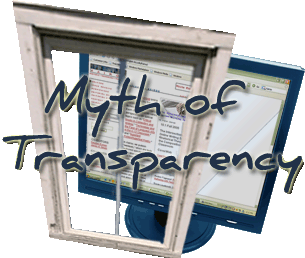
In his letter to the editor, Dennis G. Jerz (2000) says tongue-in-cheek, that Kairos "has drastically improved," making it "no longer an easy target" for critique. Indeed, with Issue 4.1 (1999), Kairos updated its presentation, making "ample use of javascript and cascading style sheets to maintain the interface" (Eyman, 1999). This new interface certainly addresses many of the concerns about design and navigation identified since the first issue by "reducing the number of frames used by the journal" (Eyman) as well as the number of graphics. In doing so, the editors achieved, I think, a stable transparency. Transparency refers to a design strategy that seeks to ensure users will not notice the interface, rendering it so invisible that it disappears. Ever since the Web came to be, Jakob Nielsen has been preaching transparency, arguing that content is the only thing that matters and that "everything else is just back-drop. The design is there to allow people access to the content" (p. 99). This argument represents what David Bolter and Diane Gromala (2003) call a structuralist perspective in Windows and Mirrors; the belief that information is to be "organized and presented to users in the most efficient way possible" (p. 6). This dogma seems to have become embedded in any instructions about web design and usability.
Kairos's new interface certainly demonstrates mastery of web usability and transparency: navigation is easier and the frames more invisible, helping the "reader forget about the interface" (Bolter & Gromala, 2003, p. 26). This dogma is nowhere more prevalent than in Jason Teague's (1996) description of his job as production manager stated in the very first issue:
Being production manager is one of the most thankless jobs on a journal. Don't get me wrong, all the other editors and reviewers have hard jobs too, but they are dealing with the content of the journal. They work with what everybody cares most about: the text(s). So if the journal is a success, they get the credit; on the other hand, if a production manager does a good job, the reader should not really notice his/her work. The job is to make sure everything is easy to use, easy to read, and easy on the eyes. If I don't do a good job, and people complain that texts are hard to read or the interface (in the webbed world) is too difficult, then I hear about it. … So, while you're reading the hypertexts in this journal, if you notice that you don't notice how easy Kairos is to use, please let me know.
Teague's description and direct address to readers easily demonstrates the structuralist goal of transparency and invisibility in design.
